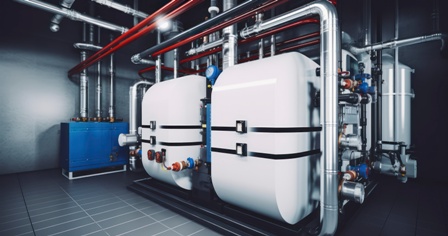In commercial property development and maintenance, the quest for optimizing operational efficiency, enhancing safety standards, and embracing environmental sustainability has led to the integration of sophisticated technological solutions. Among these, advanced control valves emerge as pivotal components, crucial for the seamless operation and intelligent management of modern buildings.
This article is meticulously crafted to serve as an in-depth guide on the multifaceted applications of advanced control valves in commercial properties, tailored for professionals who are at the forefront of architectural innovation and building management excellence.
1. HVAC System Regulation
In heating, ventilation, and air conditioning (HVAC) systems, advanced control valves, such as Asco Valves, stand as guardians of comfort and air quality. They meticulously manage the flow of heating or cooling media, ensuring that indoor temperatures are kept within a comfortable range for occupants.
Beyond temperature, these valves play a vital role in air quality management by regulating ventilation rates. This not only ensures that fresh air is consistently circulated throughout the building, reducing pollutants and maintaining a healthy environment, but also optimizes energy use by adjusting airflow based on occupancy levels and other variables.
2. Water Supply And Conservation
Water management in commercial properties is a critical concern, both from a cost and sustainability perspective. Advanced control valves contribute significantly to water conservation efforts through their ability to detect leaks and automatically adjust or shut off water flow, thus preventing waste and potential water damage.
In landscaping, these valves optimize irrigation practices, using data and sensors to apply water only where and when it’s needed, substantially reducing water usage without sacrificing the health of the greenery.
3. Energy Management
The strategic deployment of advanced control valves in heating, cooling, and steam distribution systems directly contributes to a building’s energy management efforts. By modulating valve positions, these devices ensure that heating boilers, chillers, and heat exchangers operate at peak efficiency, minimizing energy waste. Steam systems control the distribution of steam for heating or processes, optimizing the use of energy and reducing operational costs.
4. Safety Systems
Safety is paramount in commercial properties, and advanced control valves are critical in fire suppression and gas distribution systems. They manage the flow of fire suppression agents to combat fires effectively. In gas distribution systems, they ensure safe operation, including emergency shut-off capabilities to prevent accidents and protect occupants.
5. Building Automation Systems Integration
Integration with Building Automation Systems (BAS) allows advanced control valves to enhance building efficiency and occupant comfort through real-time monitoring and automated adjustments based on factors such as occupancy and time of day. This integration facilitates predictive maintenance, using data from the valves to foresee and prevent potential failures, ensuring continuous operation without downtime.
6. Process Control For Industrial Areas
In commercial properties with industrial areas, such as manufacturing spaces or treatment facilities, advanced control valves are essential for process control. They manage the precise flow of chemicals, contributing to safety and efficiency, and regulate waste material movement, ensuring environmental compliance and efficient waste management.
7. Utility Management
Advanced control valves facilitate effective utility management through their application in water metering and air handling units (AHUs). By controlling water flow to different zones, they aid in accurate utility metering and billing. In AHUs, they adjust air flow, aligning ventilation with actual needs to enhance comfort while reducing energy consumption.
8. Renewable Energy Systems Support
Supporting renewable energy systems, such as biomass or solar energy production, advanced control valves manage the flow of fluids and biomass materials to maximize efficiency and energy capture. This not only contributes to a building’s sustainability profile but also reduces reliance on traditional energy sources.
9. Commercial Kitchens And Hospitality
In the hospitality sector, including commercial kitchens, advanced control valves regulate steam for cooking processes and water temperatures, ensuring efficient, safe food preparation and optimal guest comfort. This precision in temperature control is crucial for both hygiene and customer satisfaction.

10. Specialized Cooling Systems
Critical applications such as data center cooling and process cooling in commercial buildings rely on advanced control valves to maintain optimal temperatures. These systems prevent overheating in data centers, protect sensitive equipment and data, and ensure safe operating temperatures in industrial processes, preserving product quality and worker safety.
11. Supporting Aquatic Features
Commercial properties with aquatic features such as fountains, pools, or water walls utilize advanced control valves to manage water flow and treatment. These valves ensure the aesthetic and functional operation of the features while optimizing water use and maintaining cleanliness, contributing to the property’s appeal and value.
12. Enhanced Refrigeration Control
In commercial properties with significant refrigeration needs, such as hotels, restaurants, and supermarkets, advanced control valves play a crucial role in refrigeration systems. They optimize the cooling process, reducing energy consumption while ensuring that perishable goods are stored at the correct temperatures, thus minimizing waste and ensuring safety.
Conclusion
Advanced control valves transcend their role as mere components within a system; they are integral to the intelligent design and operation of commercial properties. Their widespread application and potential for future integration underscore their importance in paving the way for the next generation of smart, sustainable commercial environments.

